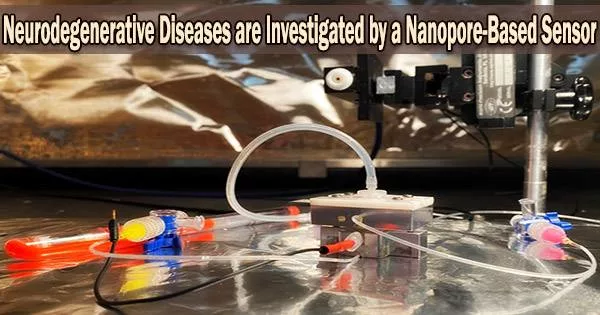Nanopore technology is a method for detecting and analyzing single molecules in real-time. In the context of neurodegenerative diseases, nanopore-based sensing devices can be used to explore disease-related changes in biomolecules such as DNA, RNA, and proteins.
Tau and tubulin proteins are one of the leading causes of many neurodegenerative diseases, such as Alzheimer’s and Parkinson’s. The accumulation of these proteins in the brain is mostly responsible for the advancement of neurodegenerative diseases.
Inspired by one of her doctoral students who wanted to explore tau and tubulin proteins, Jiali Li, a physics professor at the University of Arkansas, and her group created a special silicon nitride nanopore-based sensing device.
Acharjee et al. present the device in the Journal of Applied Physics from AIP Publishing. It is intended to give volume information about tau and tubulin protein molecules and their aggregation states at the single-molecule level in their natural environment.
The scientists investigated how the proteins alter the current and voltage passing through a nanopore system in order to develop the sensor.
Our study shows that a silicon nitride nanopore device can measure volume information of tau and tubulin protein molecules and their aggregation under different biological conditions, and this gives us a better understanding of the protein aggregation process, as well as developing drugs or other therapeutic methods to treat neurodegenerative diseases.
Professor Jiali Li
“Ohm’s Law is the basic physics that enables the nanopore device to sense protein molecules,” said Li. “A tiny hole from 6 to 30 nanometers is made in a thin silicon nitride membrane and supported by a silicon substrate. When that is placed into a solution with salt ions, applying an electric voltage drives the ions’ flow through the hole, or nanopore. This, in turn, generates an open pore ionic current.”
It also gets forced into the nanopore and obstructs the flow of certain ions when a charged protein molecule, which is frequently thousands of times larger than the ions, is close to the nanopore. This causes the open pore current to drop.
“The amount of current drop produced by a protein molecule is proportional to the protein’s volume or size and shape,” said Li. “This implies that if protein A binds to protein B, they will cause a current drop proportional to the volume of A+B, and an aggregated protein A will cause approximately multiple amounts of current drop.”
As a result, Li and her team can examine how proteins bind and aggregate inside a nanopore device. Another important piece of knowledge about a protein molecule is provided by the fact that the length of time a protein spends in a nanopore is inversely related to its charge.
“Our study shows that a silicon nitride nanopore device can measure volume information of tau and tubulin protein molecules and their aggregation under different biological conditions, and this gives us a better understanding of the protein aggregation process, as well as developing drugs or other therapeutic methods to treat neurodegenerative diseases,” said Li.
Using their solid-state nanopore device, along with other nanotechnology tools, “we plan to study the mechanism of protein aggregation under different biological conditions systematically, such as temperature, pH, and salt concentration,” she said.





